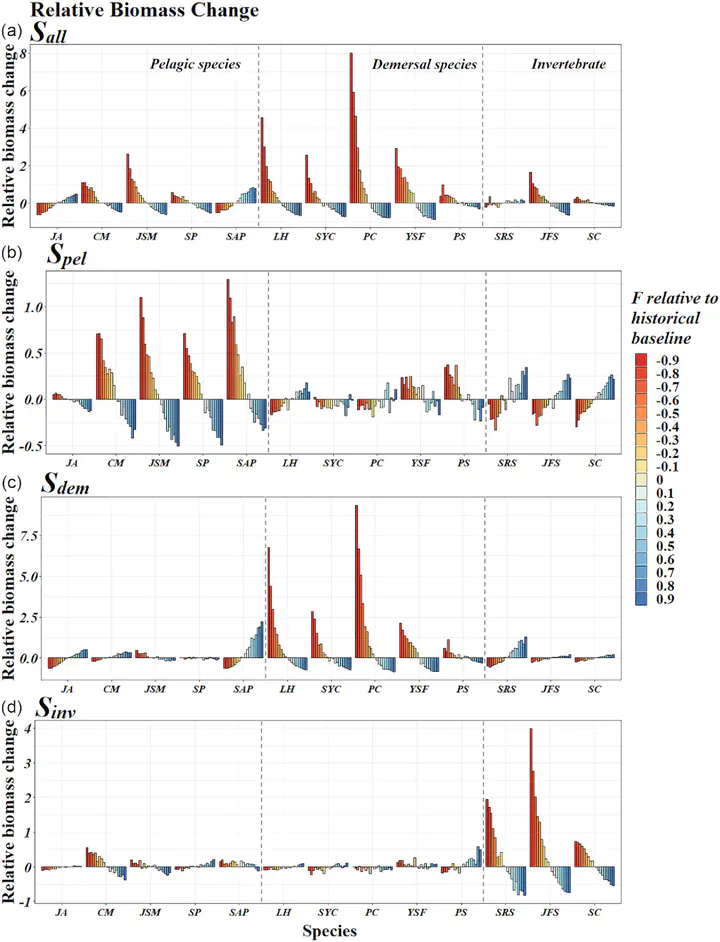Exploring balanced harvest as a potential strategy for highly exploited multispecies fisheries
 Image credit: icesjms
Image credit: icesjms
Abstract
Balanced harvest (BH) proposes moderate fishing mortality rates across all species or sizes in proportion to productivity, serving as a possible strategy for ecosystem-based fisheries management. Fishing patterns in some developing countries (e.g. China, the largest producer of seafood) closely resemble BH, where catches have been highly diversified by unselective gears due to market demand for almost all species. In this study, we employed an OSMOSE ecosystem model developed for the Yellow Sea in China to investigate the potential occurrences and advantages of BH in this region with highly exploited multispecies fisheries. Simulations were carried out under four types of fishing scenarios, where various levels of fishing mortality rates for all species or specific functional groups were implemented. Results indicated that the occurrences of BH depended on fishing pressure and targeted functional groups, and that size-level BH was significantly correlated with biomass and yield for most species. In particular, varying fishing pressure for certain functional groups resulted in BH, which produced a high yield for specific species and ensured their biomass sustainability. We concluded that the benefits of BH could be potentially achieved by adjusting fishing pressure for certain functional groups based on the existing fishing pattern in over-exploited ecosystems.